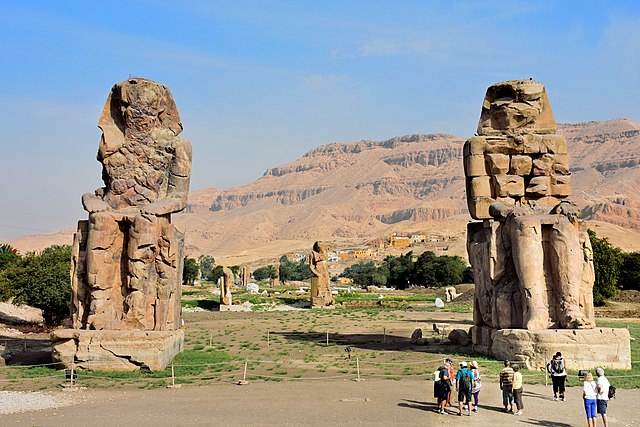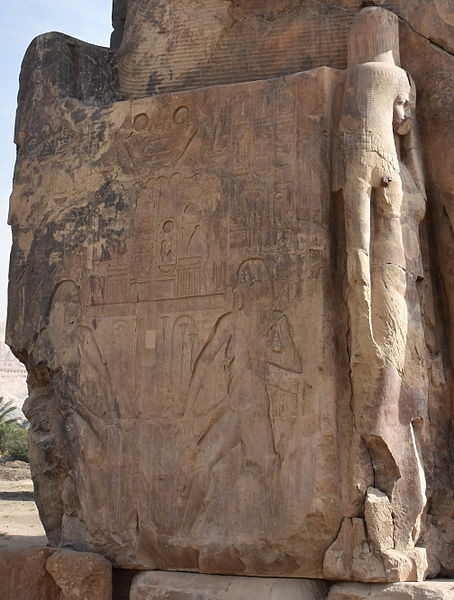The Colossi of Memnon are two massive stone statues of the Pharaoh Amenhotep III, which stand at the front of the ruined Mortuary Temple of Amenhotep III, the largest temple in the Theban Necropolis. They have stood since 1350 BC, and were well known to ancient Greeks and Romans, as well as early modern travelers and Egyptologists. The statues contain 107 Roman-era inscriptions in Greek and Latin, dated to between AD 20 and 250; many of these inscriptions on the northernmost statue make reference to the Greek mythological king Memnon, whom the statue was then – erroneously – thought to represent.
The Colossi of Memnon in 2015
Antonio Beato, Colosses de Memnon, 19th century. Brooklyn Museum
Side panel detail showing two flanked relief images of the deity Hapi and, to the right, a sculpture of the royal wife Tiye
Base inscriptions
Amenhotep III, also known as Amenhotep the Magnificent or Amenhotep the Great and Hellenized as Amenophis III, was the ninth pharaoh of the Eighteenth Dynasty. According to different authors, he ruled Egypt from June 1386 to 1349 BC, or from June 1388 BC to December 1351 BC/1350 BC, after his father Thutmose IV died. Amenhotep was Thutmose's son by a minor wife, Mutemwiya.
Statue of Amenhotep III, British Museum
Amenhotep and Tiye with one of their daughters
One of the many commemorative "marriage scarabs" of Amenhotep, which affirm the divine power of the king and the legitimacy of his wife, Tiye. Walters Art Museum, Baltimore.
Queen Tiye, Great Royal Wife of Amenhotep








